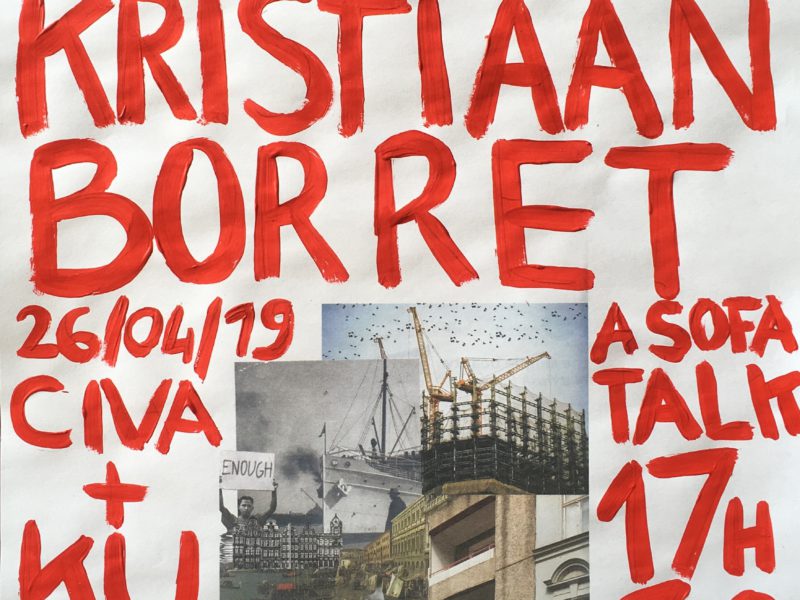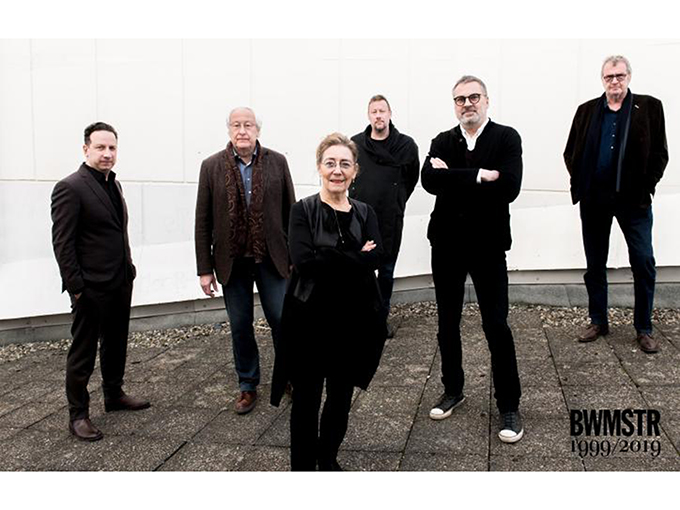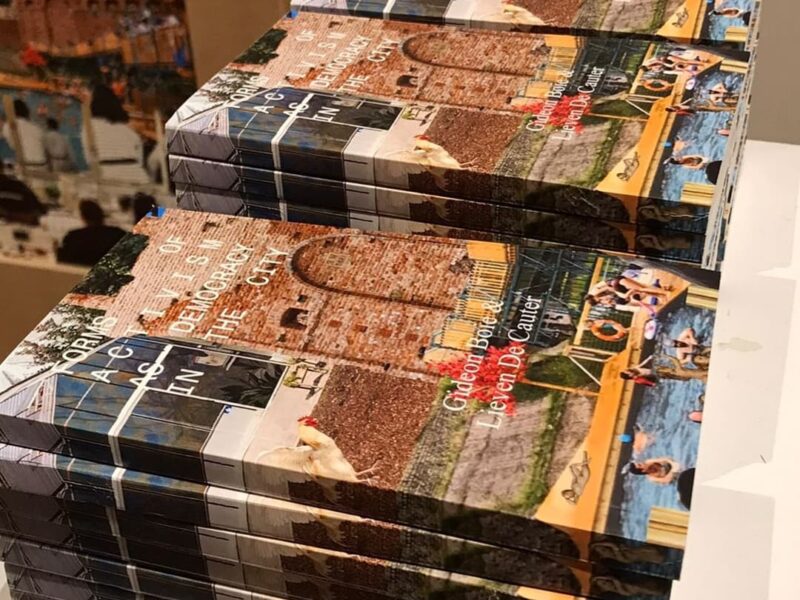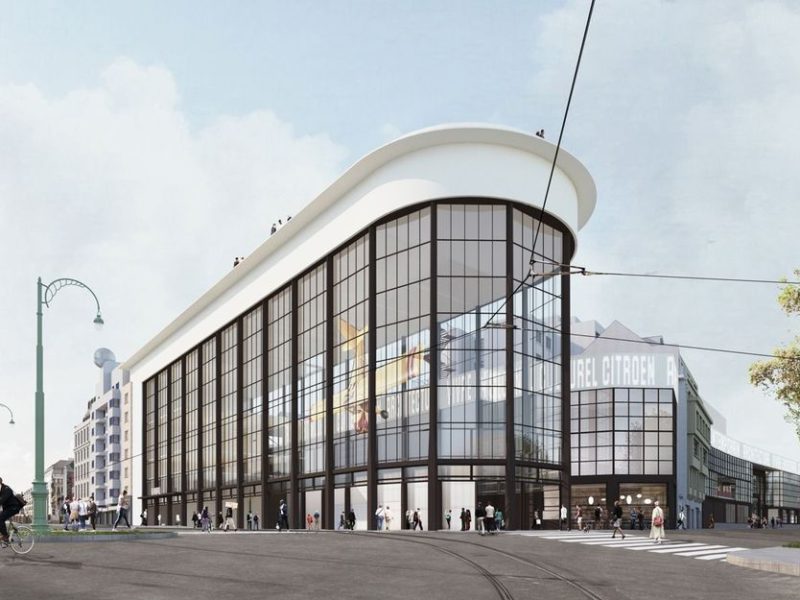Article
Architecture of power and empowerment
Gideon Boie
14/03/2024, A+
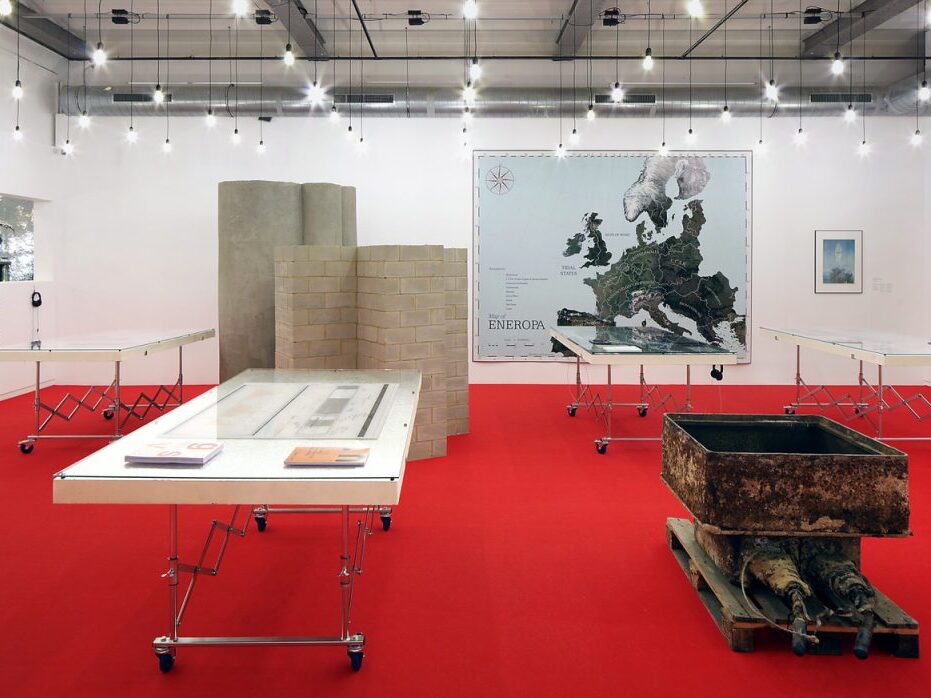
The geopolitics of energy in the climate regime has quite an impact on space and architecture obviously. The POWER exhibition at CIVA (open until March 17, 2024) offers a rich overview. The visitor is challenged to understand energy infrastructures not just as instruments for the production and distribution of power, but also in relation to political power. Thus the energy question equally allows for a potential counterproject that subverts vested power and knowledge.
Central piece in the exhibition is a photo installation by Armin Linke showing impressive pictures of power works all over the world. It shows water dams, sites of extractivism, post-industrial landscapes and such more. The work is described as an archaeology of the Anthropocene, although it remains rather one-dimensional. The photography counts on the sublime effect of the grandiose landscapes, particularly striking when the human scale is introduced. The installation itself takes a rather pretentious place in the exhibition, especially in the eye-catching drawing board supports and articulated Instagram-like framing.
The archeology of the Anthropocene takes a more subtle turn in the film The Great Endeavour (2023) by Liam Young. The film shows grandiose views of the massive landscapes of power infrastructures to store carbon, harvest solar energy in deserts, offshore drilling platforms, etc. It remains unclear whether the scenes are imaginary or not, consequently the interpretation is less obvious. The sublime effect remains present but gets distorted by an swelling, incantatory and almost hallucinatory soundtrack. It remains unclear whether the artist appreciates the power works or on the contrary portrays it as the dystopian future.
When it comes to the urbanism of the Anthropocene the exhibition offers a nice collection of cases, such AMO’s study entitled ‘Zeekracht’ (Sea Power, 2008), a masterplan for offshore wind farms in the North Sea commissioned by Stichting Natuur en Milieu. The document fits the typical optimism of Dutch planning tradition and capitalizes the many trickle-down effects of the new maritime landscapes – in terms of fauna, leisure and more. However, the study lacks the ‘critical paranoid’ character of early writings of Rem Koolhaas. It seems like AMO really believes in the proposals and they would even turn a catastrophe into an opportunity.
A more intriguing coming together of different interests is visible in the dossier of Dennis Pohl on the 1958 Brussels World’s Fair. The dark ‘colonial’ shadow of Expo 58 is quite known. Now it appears that the Expo 58 was also lubricant for the building of a nuclear plant in Brussels. The historical documents at show are highly concrete. The construction site was foreseen at the Van Praet bridge, just next to the Royal Domain of Laeken and the Brussels Royal Yacht Club. The urban building permit was already issued by Paul Vanden Boeynants, notorious figure in the megalomaniac period of ‘Bruxellisation’,
The permit was delivered under a special decree referring to the urgency of Expo 58. The drawings are remarkably without an architect’s name. Documents show how king Baudouin filed complain against the building project, even referring to citizen protest in the area. The nuclear plant was later realized in the atomic village of Mol, including a highly modernist housing estate, near the border with the Netherlands. Still the whole history suddenly sheds a rather awkward shadow over the innocent use of the Atomium as symbol for Brussels, it is just a poor leftover of a rather obscure belief in the future.
Still, we must look elsewhere in the exhibition for an interpretation of subjective agency in the Anthropocene. ‘The Pile’ (2018) by CityMine(d) shows the hard work of creating local energy communities in Brussels. The work raises awareness among lay people about the invisible thing of energy and directly engages with everyday life. As such the pioneering work challenges the corporate interests of energy monopolies and delves into complex legislation. For this reason the bottomup initiative of The Pile also prepares the ground for future legislative innovation that makes the sale of commonly produced energy possible.
The agency of architecture in the Anthropocene also figures strongly in ‘HouseEurope!’, a citizens’ initiative pushing for an EU-legislation to stop demolition, initiated by Arno Brandlhuber and Olaf Grawert. Many starchitects act as ambassador for the manifesto, like Herzog & De Meuron, Lacaton Vassal, and others. The initiative shows how architects might well figure in the service of clients, still it does not mean they lose the capacity to act politically. On the contrary, the seat of power allows the architect to steer towards change and provide knowledge and experience. The clarity of statement makes HouseEurope! a unique case of architectural activism.
Many other work in the exhibition allows to scrutinize agency in the architecture of the Anthropocene, from the Notre Dame cathedral square in Paris by Bas Smets and the ecosystem analyses of Paul Duvigneaud to the drawing of the 1981 election campaign poster for the green party Ecolo by Luc and François Schuiten. Even the red carpet in the exhibition space appears to be not just scenography but another contribution on the topic by Philippe Rahm. In a video Bruno Latour sketches the challenge in the Antropocene: ‘how do we think collectively about the new situation, the Anthropocene?’ Ecological urbanism is not so much about the restoration of nature, but more about empowering people to overcome their passiveness in face of the ‘technosphere’.
This review is inspired by the Expo tour guided by master’s students in Architecture and Activism of the Faculty of Architecture KU Leuven.
Article published in Dutch by A+ Architecture in Belgium
Tags: Activism, Brussels, English
Categories: Architecture
Type: Article
